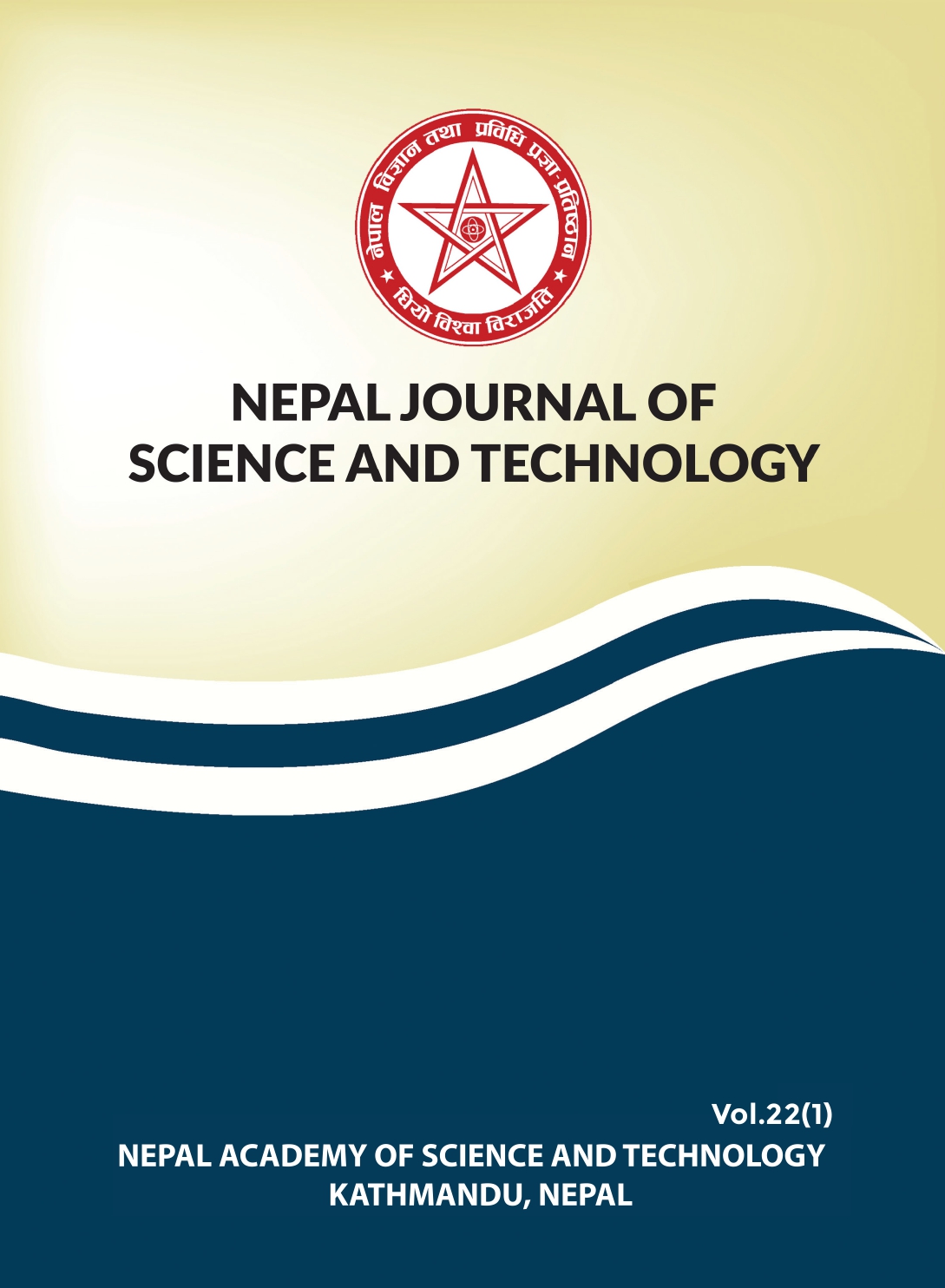Multi-drug Resistant Staphylococcus aureus and Escherichia coli in Marketed Raw Meat in Kathmandu Valley
DOI:
https://doi.org/10.3126/njst.v22i1.67160Keywords:
Escherichia coli, Meat, Multi-Drug Resistance (MDR), Staphylococcus aureusAbstract
Antimicrobial resistance is a critical worldwide issue that affects both humans and animals. Antimicrobial resistance in microorganisms has been associated to the indiscriminate use of antibiotics in livestock and poultry. Bacterial antimicrobial resistance is witnessing a rapid rise in both human and animal health sector. Still antimicrobial resistance patterns in Nepal are poorly documented, with only a few studies on bacterial prevalence and antimicrobial resistance pattern have been done. This study characterized and provided antimicrobial resistance status of bacteria from raw meat sold in Kathmandu valley. This study was conducted with an objective to find the prevalence and antibiotic susceptibility pattern of Staphylococcus aureus and Escherichia coli from raw meat sold in Kathmandu valley. The cross-sectional study was conducted from February to April 2022 at Nepalese Farming Institute, Dillibazar, Kathmandu. A total of 100 raw meat samples, chicken (n= 60), pork (n=20) and buff (n=20) were collected from different retail shops. The meat samples were minced and enriched in M-Staph broth and MacConkey broth at 37°C for 24 h. The suspension was sub-cultured on Mannitol salt agar and MacConkey agar. The bacterial isolates were identified on the basis of colony morphology, Gram’s staining reaction and biochemical tests. Antibiotic susceptibility pattern of bacterial isolates were determined by modified Kirby-Bauer disc diffusion method according to Clinical & Laboratory Standards Institute (CLSI) guidelines. Out of 100 meat samples, 162 bacterial isolates were detected, where E. coli 51.85% (n=84) was the most prevalent bacteria followed by S. aureus 48.15% (n=78). Majority of E. coli isolates (63.09%) were resistant to tetracycline and most of S. aureus isolates (37.1%) were resistant to gentamicin. Multi-drug resistance was higher in E. coli (51.1%) than S. aureus (23.07%). Therefore controlled use of antibiotics in all sectors should be implemented and proper policy and regulations should be formulated on meat handling.
Downloads
Downloads
Published
How to Cite
Issue
Section
License
Copyright (c) 2023 The Author(s)

This work is licensed under a Creative Commons Attribution-NonCommercial 4.0 International License.
Authors retain copyright and grant the journal right of first publication.




